Phytophthora
Blight of Cucurbits: How to Manage It?
Over the past several years, the incidence of Phytophthora blight, caused by Phytophthora capsici, on vine crops (cucumbers, cantaloupe, muskmelon, pumpkins, squash, watermelon) has been increasing throughout Illinois and in many vegetable-growing regions of the United States. The disease can be devastating, occasionally resulting in nearly total yield loss. Phytophthora capsici is also a serious pathogen on eggplant, pepper, and tomato.
No single method currently available provides adequate control of Phytophthora blight. A combination of measures should be practiced to reduce the damage caused by P. capsici on cucurbits. The most effective practice in controlling P. capsici is preventing the pathogen from being moved into a new field. The following practices can help to manage Phytophthora blight in cucurbit fields:
1. Select fields with no history of Phytophthora blight.
2. Select fields that did not have cucurbit, eggplant, pepper, or tomato for at least 3 years. No rotation period has been established for effective management of Phytophthora blight of cucurbits.
3. Select fields that are well isolated from fields infested with P. capsici.
4. Select well-drained fields, or do not plant the crop in the areas of the field which do not drain well.
5. Clean farm equipment of soil between fields.
6. Plant non-vining crops (i.e., summer squash) on dome-shaped raised beds (approximately 25 cm high).
7. Plant resistant varieties, if available.
8. Avoid excessive irrigation.
9. Do not irrigate from a pond that contains water drained from an infested field.
10. Do not work in wet fields.
11. Scout the field for the Phytophthora symptoms, especially after major rainfall, and particularly in low areas.
12. When symptoms are localized in a small area of the field, disk the area.
13. Discard infected fruit, but not in the field.
14. Do not save seed from a field where Phytophthora blight occurred.
15. Remove healthy fruit from the infested area as soon as possible and check them routinely.
16. Do not display fruit for sale in an area that is infested with P. capsici.
17. Apply effective fungicides, when recommended. Seed treatment with either mefenoxam (Apron XL LS at 0.64 fl oz/100 lb seed) or metalaxyl (Allegiance FL at 1.50 fl oz/100 lb sees) can protects seedlings of cucurbits until 5 weeks after sowing seed. Applications of dimethomorph (Acrobat 50WP at 6.4 oz/A) plus copper sulfate (i.e., Cuprofix Disperss at 2 lb/A), at weekly intervals, can provide effective protection against foliar blight and fruit rot caused by P. capsici in cucurbit fields. Crop losses resulting from Phytophthora blight in cucurbit fields can be minimized by combining Apron 50WP seed-treatment with applications of Acrobat plus copper.
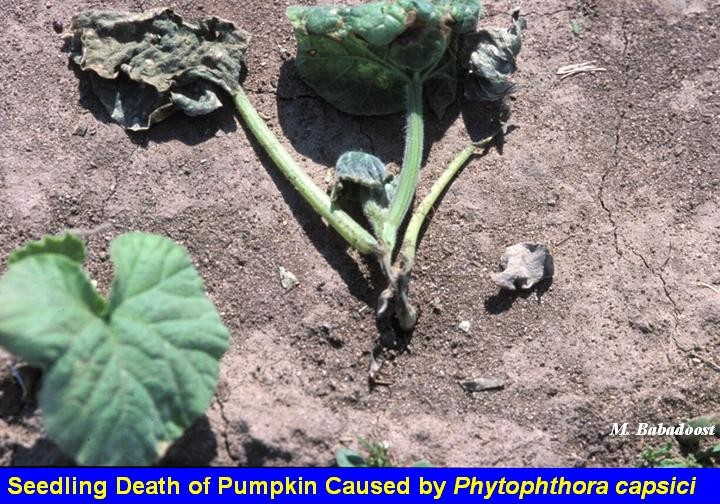 |
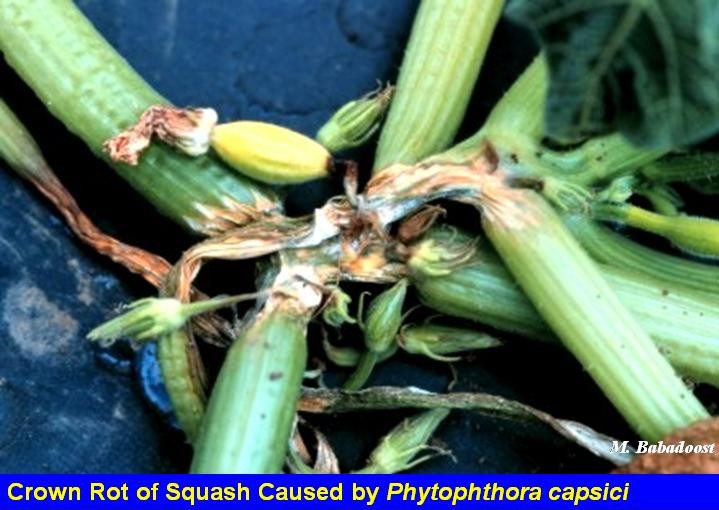 |
|
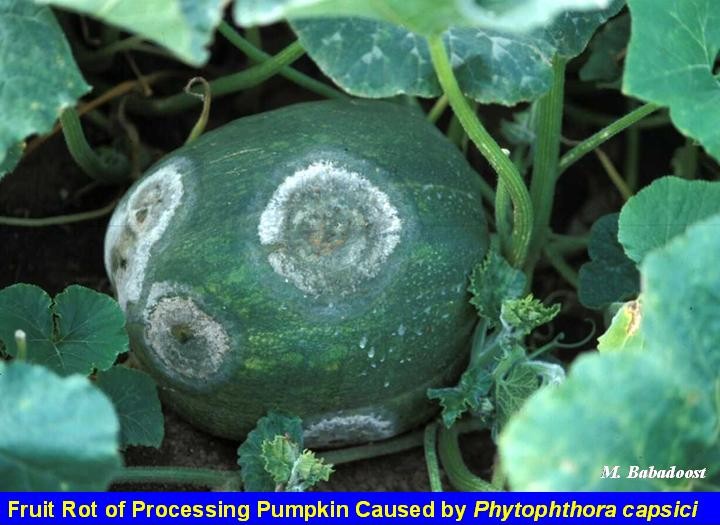 |
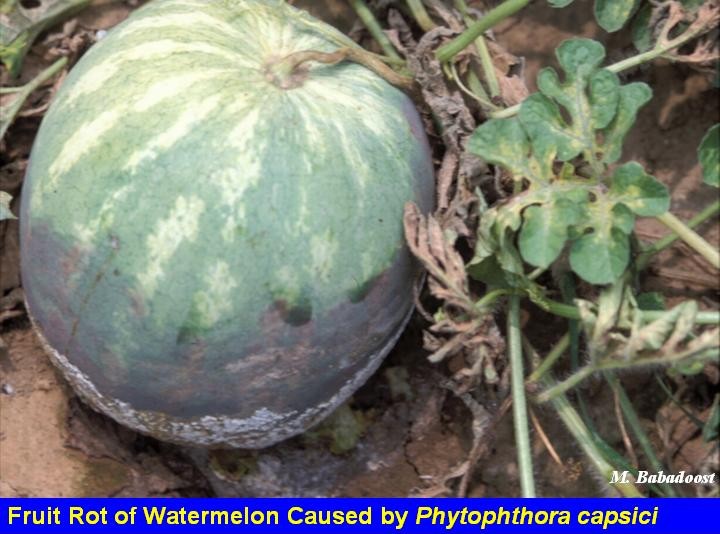 |
|
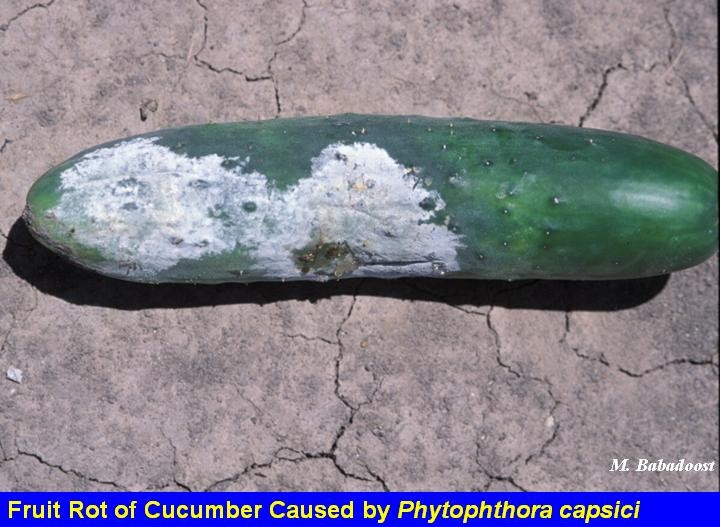 |